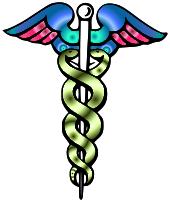First do no harm
 An article published Monday in the Journal of Emergency Nursing will hopefully change the treatment of transgender people in hospital emergency rooms. The article was submitted by Ethan Collin Cicero, BSN, RN and Beth Perry Black, PhD, RN, from Chapel Hill, NC and was entitled, I was a Spectacle...A Freak Show at the Circus: A transgender Person's ED Experience and Implications for Nursing Practice
An article published Monday in the Journal of Emergency Nursing will hopefully change the treatment of transgender people in hospital emergency rooms. The article was submitted by Ethan Collin Cicero, BSN, RN and Beth Perry Black, PhD, RN, from Chapel Hill, NC and was entitled, I was a Spectacle...A Freak Show at the Circus: A transgender Person's ED Experience and Implications for Nursing Practice
The article offers a case study for Brandon James (not his real name), a transgender man who visited an Emergency Department in the southeastern US a few years ago, expecting to be treated like any other patient.
Instead, he was treated like a "freak show at the circus" by hospital staff when the female marker on his driver's license and medical record did not match up with his masculine appearance and preference to go by male pronouns.
The authors point to one recent study, which found that about 19 percent of transgender patients reported having been refused care because of their gender status, and 28 percent said they experienced harassment in a medical setting.
Unfortunately, this is fairly common. From a nursing perspective, those are very alarming numbers to learn about, so that's why we wanted to look a little more closely into this community's health care experiences.
--Cicero, a doctoral student at the Duke University School of Nursing
Brandon arrived at the ED with elevated blood pressure and severe anxiety. The "confused" staff member at the registration desk left briefly to round up three or four other employees and the group proceeded to "make a spectacle" of Brandon, pointing and saying things out loud like "No, that's really a girl!"
Following check-in and several hours of waiting, a second staff member furthered the patient's discomfort by repeatedly referring to him as "Ms. James" or the female pronouns, despite his objections.
He ended up leaving without seeing a doctor and planned to never visit that facility again. About 28 percent of transgender patients surveyed say they have postponed medical care because of discrimination.
It definitely makes me wary of going to an emergency room again. I refuse to go to that specific place.
--Brandon
The authors suggest several simple steps nursing leaders might take to improve patient care:
- Develop policies and protocols to accommodate transgender patients within facilities
- Establish trans-inclusive spaces within hospitals
- Update demographic forms and electronic health records to recognize transgender identities
- Educate all staff members on appropriate communication with transgender patients
Harm must not be inflicted by providers' misunderstandings or even biases about gender expressions or identities. Health disparities experienced by transgender people is an example [of] one of the many breakdowns in the U.S. health care system. Nursing, however is capable of creating the change needed to provide equitable care to all persons, including members of the transgender community.
For more on transgender health care issues:
Transgender and Searching for Good Health Care
Transforming The Doctor's Office To Welcome Transgender Patients
Discrimination leads to dangerous health consequences among transgender Americans
Miller and Grollman also discovered a paradoxical relationship between medical and social transition statuses and discrimination among transgender adults. Greater steps to medically transition, through hormonal therapy or surgical treatment, and socially transition through living full time in one’s desired gender led to greater amounts of transphobic discrimination.
Transgender Oregonians Earn Clarity from State, but Health Coverage Still Raising GOP Ire


Comments
If you are a health care professional...
...consider this an invitation to expand your education and to become a leader in that profession on transgender health issues. Transgender patients should not have to assume the additional burden of educating the people whom they approach for medical care.